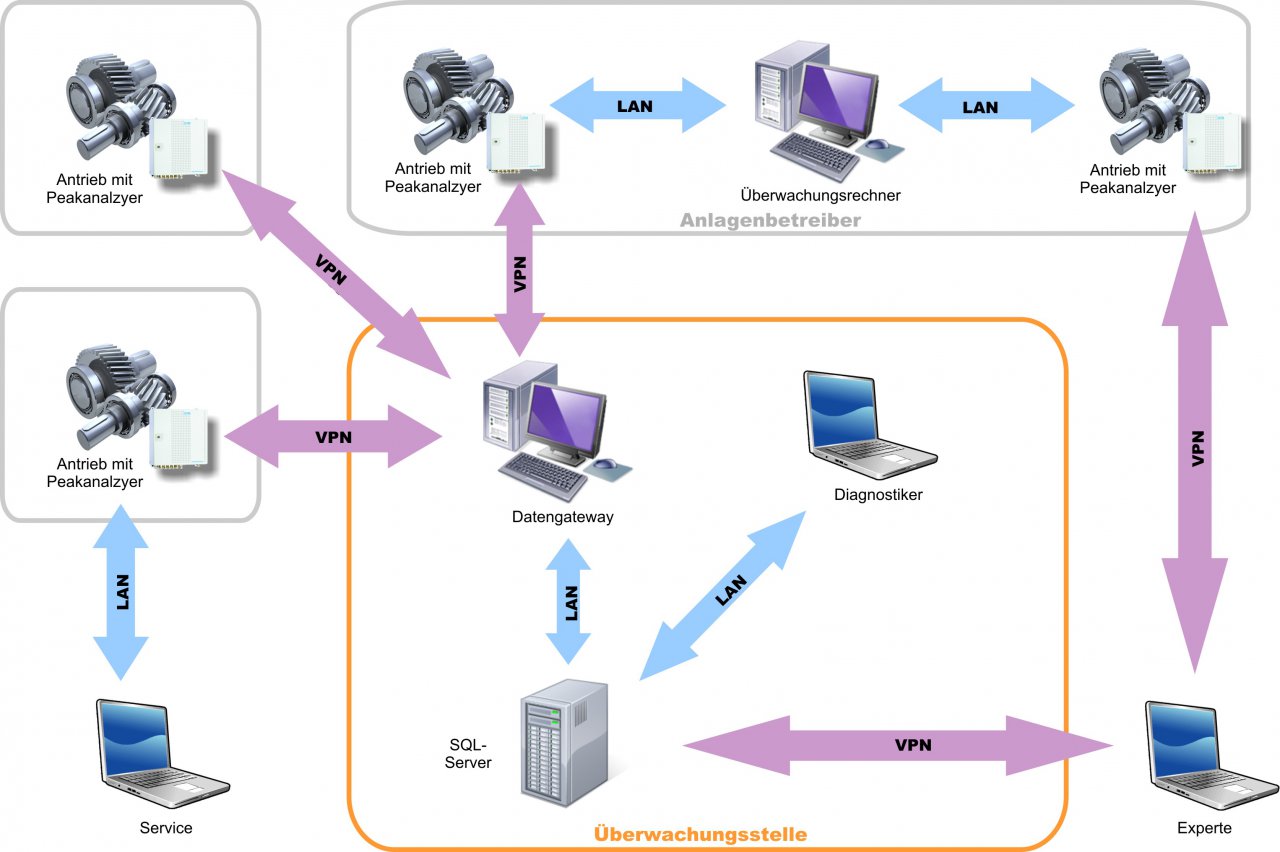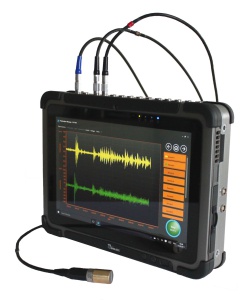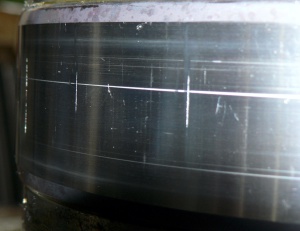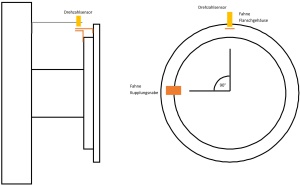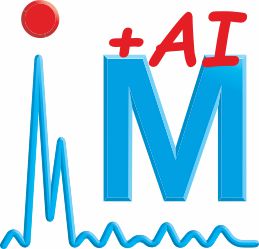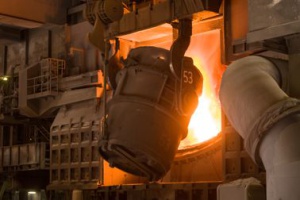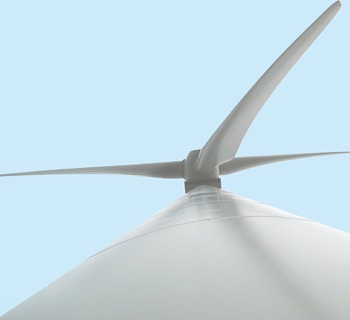-
Entry date 24.07.2025
Condition monitoring at HUSUM WIND 2025

-
Entry date 16.07.2025
Condition monitoring saves system operators a lot of money

-
Entry date 27.01.2025
Drum coupling monitoring - Automatic condition monitoring on cranes

-
Entry date 18.10.2024
Condition Monitoring and Artificial Intelligence

-
Entry date 15.12.2023
Condition monitoring at maintenance Dortmund on February 21st and 22nd, 2024

Integrated BladeBearingAnalyzer
The Integrated BladeBearingAnalyzer is a software license. It makes it possible to use the BladeBearingAnalyzer as an integrated system to perform condition monitoring on rotor blade bearings on a wind turbine. Very efficient diagnostic algorithms look for frequency patterns that match the damage frequencies of the individual blade bearings. The diagnosis is made for each blade bearing when the blade is pitched. If irregularities are detected on a blade bearing, an alarm is generated.
Furthermore, the bearing clearance of each blade bearing is measured and an alarm message is generated if the clearance exceeds the tolerance.
The Integrated BladeBearingAnalyzer requires a Beckhoff system on the wind turbine and an EtherCAT connection to the hub and corresponding sensor technology there. Under this condition, the BladeBearingAnalyzer can be integrated into the existing control unit. This results in a direct cost advantage, since the industrial PC used for the control can also be used for the BladeBearingAnalyzer. Likewise, the existing communication infrastructure can be used to configure the BladeBearingAnalyzer or to download the data. Diagnostic results can be made directly accessible to the control unit.
The Integrated BladeBearingAnalyzer runs in a separate task on the TwinCAT 3 environment and only accesses signal input terminals that are assigned to the BladeBearingAnalyzer. The tasks serving the control unit remain unused.
Technical requirement
- The following signals must be available via EtherCAT:
- Pitch angle signal from each rotor blade with a resolution of at least 0.1°
- Speed signal from each blade bearing with at least 3,600 pulses per revolution
- Speed signal of the rotor
- the axial displacement signal of the bearing ring connected to the rotor blade of all rotor blade bearings with 50 kHz/24 bit
(For the detection of this signal we recommend the inductive sensor Turck BI4-M12-LIU-H1141 or comparable and the Beckhoff input terminal ELM3004)
- Beckhoff IPC with TwinCAT3 and IO/C++ runtime license
- 2 free CPU cores 512 MB RAM for the measurement and analysis software
- 2 GB free hard disk space for measurement data
- It is also a prerequisite that the rotor blade is regularly pitched with full deflection.
Software installation
The following steps are required:
- Installation of the Peakanalyzer background service on the IPC
- Installation of the Peakanalyzer Configurator on a PC that is used for the TwinCAT configuration
- Installation of the Peakanalyzer Manager that is used for monitoring the BladeBearingAnalyzer to show alarm information and measurement data
Software configuration
At first the hardware channels must be assigned to the Peakanalyzer. This is done via the Peakanalyzer Configurator that is delivered as TwinCAT XAE Plugin.
Whereas following channels and terminals are configured:
- One complete terminal ELM3004 is assigned to the BladeBearingAnalyzer and is automatically parametrized by the Peakanalyzer Configurator.
- Three custom channels are configured for the speed values of each blade.
- Three custom channels are configured for the pitch angle of each blade.
- One custom channel is configured for the speed of the rotor.
The custom channels must be manually linked from the correct value of the control to the TcCom module of the BladeBearingAnalyzer. Afterwards the hardware description can be uploaded to the BladeBearingAnalyzer via the Peakanalyzer Configurator. At this stage the TwinCAT configuration of the BladeBearingAnalyzer is finished and the background service on the IPC waits for an additional configuration that must be uploaded via the Peakanalyzer Manager.
